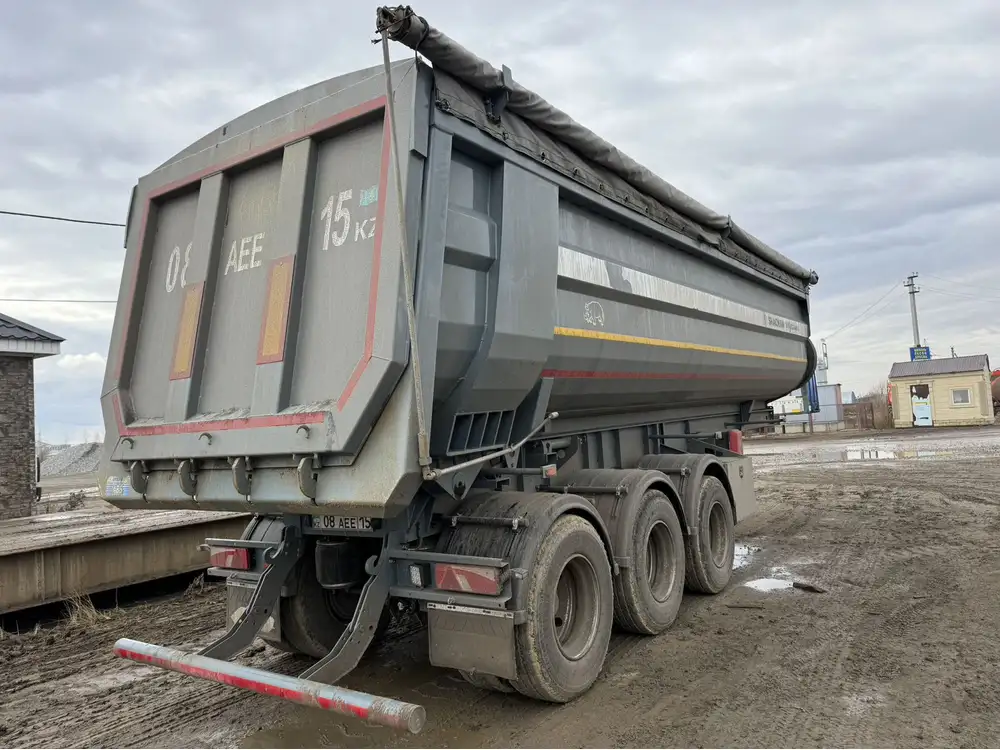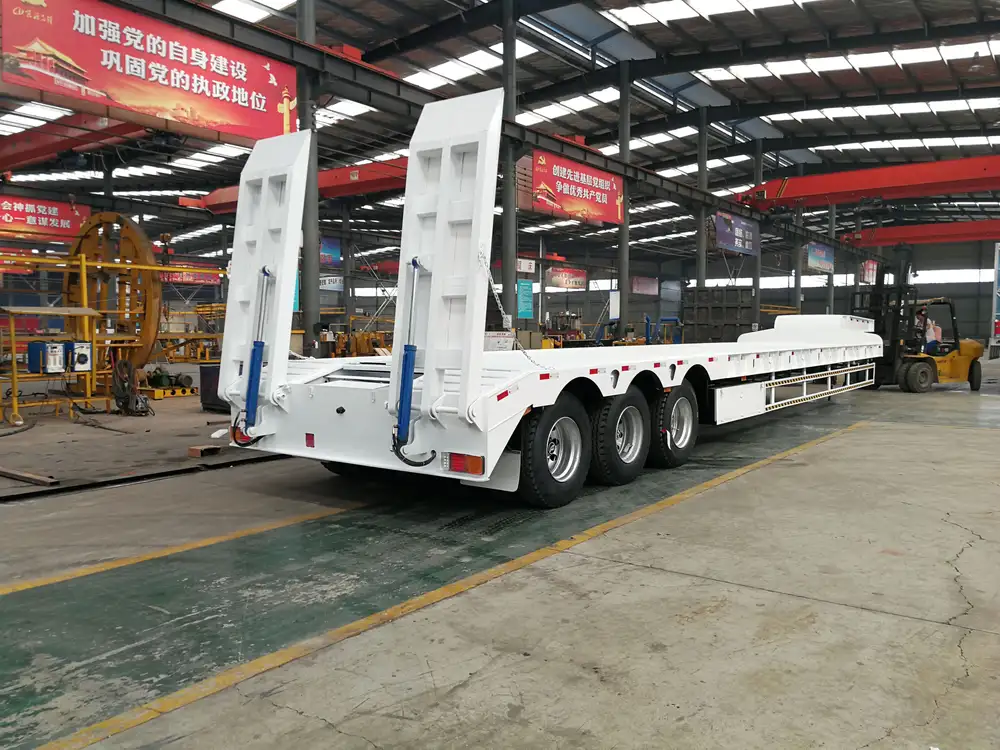Operating a dump trailer on an incline presents unique challenges and safety concerns that require careful consideration, precise technique, and robust equipment knowledge. Whether in construction, landscaping, or waste management, understanding the methods to navigate these inclines effectively can drastically impact both performance and safety standards.
Understanding the Risks: Why Operating Dump Trailers on Inclines is Challenging
When maneuvering a dump trailer on an incline, the center of gravity shifts, which can lead to potential tipping hazards. The inherent instability of loaded trailers—particularly when the load shifts or the surface is uneven—demands a heightened awareness and adherence to best practices.
Key Risks to Consider:
| Risk Factor | Description |
|---|---|
| Tipping Hazard | Unstable loads and steep slopes can lead to tipping. |
| Load Shift | Inclines can cause the load to shift unexpectedly. |
| Brake Failure | Steep slopes may strain brake systems, causing failures. |
| Inadequate Traction | Poor traction can occur on wet or loose surfaces. |

Recommended Safety Conventional Practices
Pre-Operation Inspection: Before moving your trailer on an incline, inspect it thoroughly. Check tires for proper inflation, brakes for responsiveness, and the hitch for secure attachment.
Understanding Load Distribution: Distributing the load evenly is critical. Ideally, heavier materials should be loaded towards the front of the trailer. This maintains better balance and minimizes the risk of tipping.
Driving Techniques: Engage low gears when driving up or down an incline. This provides better control and limits the strain on the brakes. Avoid sudden acceleration or braking, which can destabilize your trailer and load.
Navigating Inclines: Procedures and Best Practices
1. Preparing Your Trailer

A. Load Assessment
Assess the load type and weight before ascending inclined terrains. Knowing the weight (in tons or pounds) allows for better planning:
| Material Type | Weight per Cubic Yard |
|---|---|
| Soil | 1.2 – 1.5 tons |
| Gravel | 1.5 – 2 tons |
| Concrete Debris | 1.8 – 2.5 tons |
Understanding the load implications helps in calculating the required towing vehicle performance and ensures compatibility with the trailer specifications.
B. Trailer Maintenance
Ensure your trailer is well-maintained with a focus on:
- Brake System: Regular checks on hydraulic or air brake systems can prevent unexpected brake failures.
- Suspension System: Inspecting shocks and leaf springs for wear can enhance load stability.
2. Engaging the Incline: Ascending

A. Approach Techniques
- Evaluate the Grade: Understand the incline gradient before ascent. Subtle changes can dramatically affect your approach strategy.
- Steering Ahead: Aim your vehicle straight up the incline, minimizing sharp turns that could shift the load.
B. Gear Utilization
Using low gears is non-negotiable. Here’s a guide:
| Grade | Recommended Gear |
|---|---|
| 0% – 5% | 1st to 2nd |
| 6% – 10% | 2nd |
| 11% and above | 1st for maximum control |
By adhering to these guidelines, operators can maximize control and minimize the risk of slippage or load disturbance.
3. Descending: Techniques and Essentials

A. Controlled Descent
- Lower from the Incline Gradually: Gradual descent helps to maintain control over the load and trailer’s momentum.
- Use Engine Braking: Engage the engine brake (if available) to help control speed without overheating the vehicle’s braking system.
B. Speed Management
Maintaining a safe speed allows for quick adjustments if necessary:
| Incline Gradient | Safe Descent Speed |
|---|---|
| 0% – 5% | Up to 15 mph |
| 6% – 10% | 10 mph or less |
| 11% and above | 5 mph or less |
Using these speed benchmarks enhances operator control and contributes to overall safety.
Dealing with Load Movement: Strategies to Mitigate Shifting

1. Understanding Load Shifting Dynamics
When traveling on inclines, loads can shift due to gravity or sudden movement. This dynamic creates risks that operators need to mitigate effectively.
2. Strategies for Load Securing
Using Load Binders: Employing ratchet straps or load bars can keep loose materials in place.
Maintaining Appropriate Load Heights: Keeping material heights low reduces the center of gravity, enhancing stability.
3. Adaptations to Specific Conditions
Adapting to specific weather or site conditions is crucial:
| Condition | Adaptation |
|---|---|
| Wet or icy surfaces | Reduce speed, increase brake response time. |
| Loose gravel or sand | Increase traction aids, use appropriate tires. |

Common Questions Addressed
How can I improve traction on inclined surfaces?
Adding weight to your towing vehicle can help improve traction. Additionally, choosing tires suited for specific terrains can provide greater grip.
What should I do if my trailer begins to tip?
If you feel your trailer tipping, gently steer into the direction of the tilt while reducing your speed. Avoid sudden movements that can exacerbate the situation.

Is it advisable to use the dump feature on an incline?
It is generally not recommended to dump loads while on an incline due to the risk of tipping. Always ensure the trailer is on level ground before utilizing the dump feature.
What equipment is essential for safe incline operations?
- Leveling Blocks: For stabilizing the trailer on steep inclines.
- Emergency Braking Systems: Helps to maintain control if the primary braking system fails.
- Communication Devices: Ensuring connectivity can be vital in case of emergencies.
Final Thoughts: Elevating Safety and Efficiency in Trailer Operations
In conclusion, operating a dump trailer on an incline requires a strategic approach rooted in safety and efficiency. By implementing the best practices outlined above, operators can ensure not only the effectiveness of their operations but also the safety of themselves and those around them.
By continuously evaluating your approach and remaining aware of the unique challenges posed by inclines, you can navigate these situations with a heightened sense of confidence. Whether for construction projects, landscaping tasks, or other heavy-duty applications, mastering the intricacies of incline operations will undoubtedly yield significant dividends in productivity and safety.
Remember, the key to successfully managing a dump trailer on an incline lies in preparation, awareness, and adherence to best practices. Always prioritize safety, and never hesitate to consult with professionals for additional training or equipment recommendations tailored to your specific operational needs.



